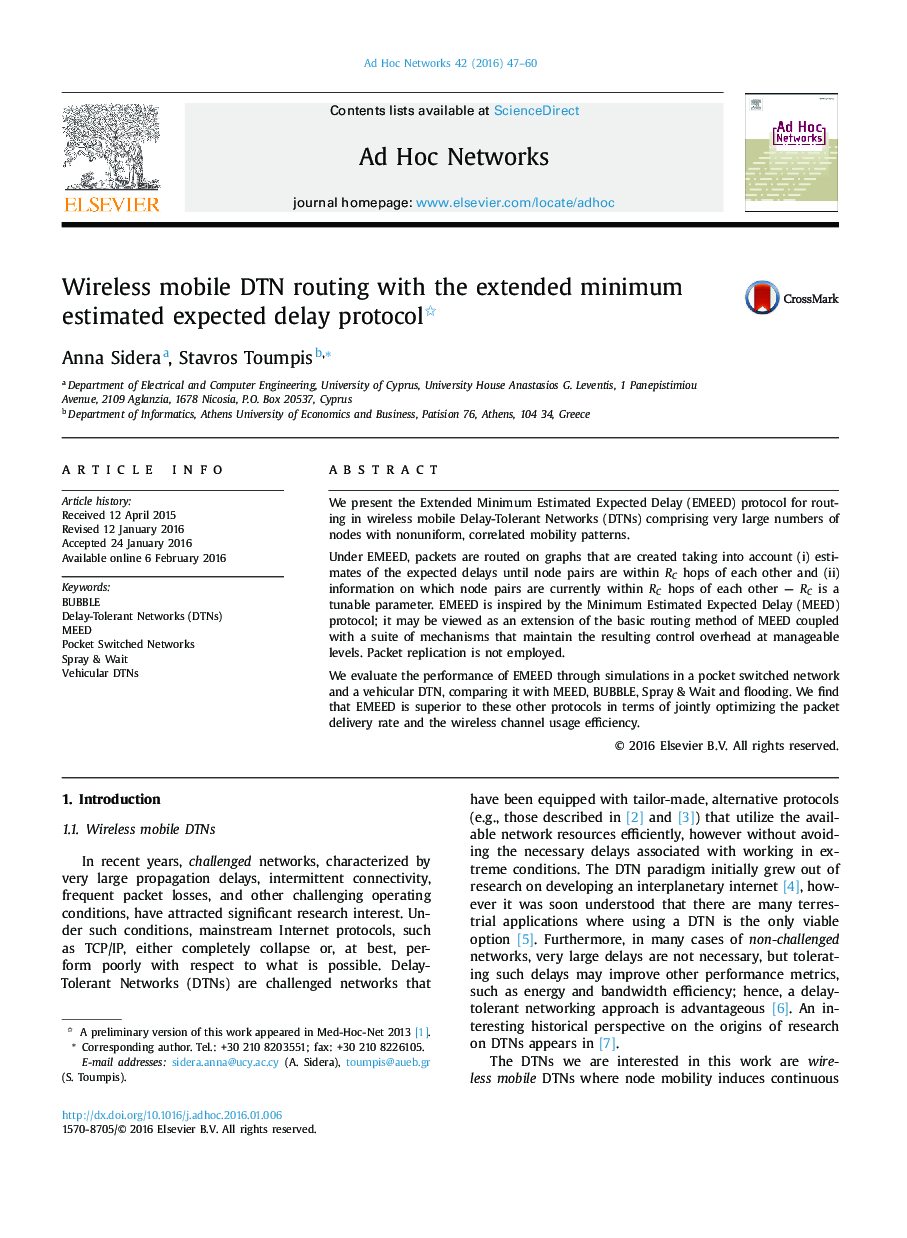| Article ID | Journal | Published Year | Pages | File Type |
|---|---|---|---|---|
| 445467 | Ad Hoc Networks | 2016 | 14 Pages |
We present the Extended Minimum Estimated Expected Delay (EMEED) protocol for routing in wireless mobile Delay-Tolerant Networks (DTNs) comprising very large numbers of nodes with nonuniform, correlated mobility patterns.Under EMEED, packets are routed on graphs that are created taking into account (i) estimates of the expected delays until node pairs are within RC hops of each other and (ii) information on which node pairs are currently within RC hops of each other — RC is a tunable parameter. EMEED is inspired by the Minimum Estimated Expected Delay (MEED) protocol; it may be viewed as an extension of the basic routing method of MEED coupled with a suite of mechanisms that maintain the resulting control overhead at manageable levels. Packet replication is not employed.We evaluate the performance of EMEED through simulations in a pocket switched network and a vehicular DTN, comparing it with MEED, BUBBLE, Spray & Wait and flooding. We find that EMEED is superior to these other protocols in terms of jointly optimizing the packet delivery rate and the wireless channel usage efficiency.
